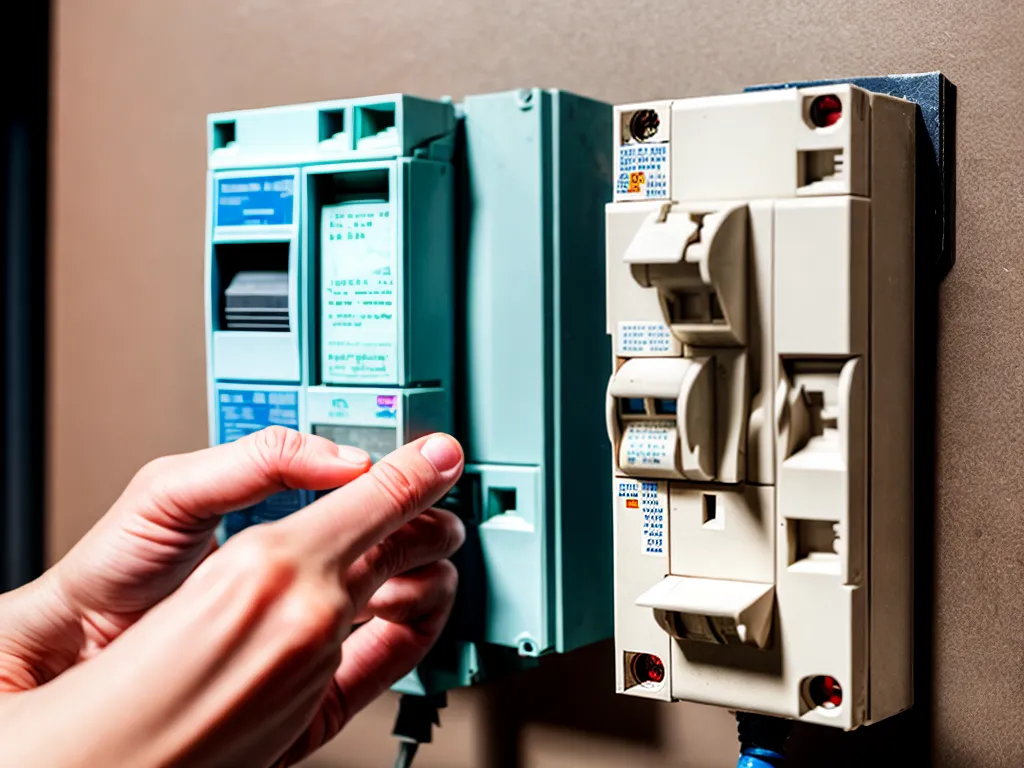
Troubleshooting unlabeled circuit breakers in commercial buildings can be a challenging task. As the owner or facilities manager of a commercial building, I need to ensure all the electrical systems are properly labeled and functional. When facing unlabeled breakers, a systematic approach is required to safely identify and label each circuit. In this comprehensive guide, I will walk through all the key steps I need to take to successfully troubleshoot unlabeled circuit breakers in my commercial building.
Understanding Commercial Electrical Systems
Before troubleshooting, it is important to have a working knowledge of commercial electrical systems. In most commercial buildings, the electrical system will include:
-
Main service panel - The main service panel is the central hub where external power from the utility company is fed into the building. This service panel will contain the main breaker that can shut off power to the entire facility.
-
Distribution panels - Distribution panels take the main power feed and distribute electricity to various circuits throughout the building. This is accomplished through circuit breakers in the distribution panels.
-
Branch circuits - The individual branch circuits distribute power from the distribution panels to equipment, lighting, and receptacles throughout the building. Branch circuits are protected by the circuit breakers found within distribution panels.
-
Conduit and wiring - Insulated wires are run through conduit to distribute power from the panels to end devices throughout the building. The conduit protects the wiring from damage.
Understanding this basic layout is essential when troubleshooting unlabeled breakers. I will be tracing circuits backwards from end devices towards the source in distribution panels.
Safety First
When dealing with commercial electrical systems, safety is paramount. Before touching any circuit breakers, I ensure:
-
Personal protective equipment (PPE) - Wearing insulated gloves, eye protection, and flame-resistant clothing reduces my risk of electrical shock and burns.
-
Lock out/tag out procedures - I implement lock out/tag out procedures to isolate circuits and prevent accidental re-energization during troubleshooting.
-
Voltage tester - I verify power is off using a non-contact voltage tester before working on any circuits.
-
Circuit tracer - A solenoid circuit tracer is an invaluable tool for safely tracing wires back to panels. I can trace wires without contact.
By making safety my top priority, I can methodically troubleshoot unlabeled circuits without risks.
Steps to Troubleshoot Unlabeled Breakers
With the right knowledge and safety preparations, I am ready to methodically troubleshoot each unlabeled circuit:
1. Locate Downstream Devices
I start by visually inspecting the building to identify any equipment, lighting, or receptacles that are not functioning properly. These devices provide entry points to trace circuits back to their source breaker.
Any device that loses power when a suspect unlabeled breaker is turned off is downstream from that breaker. I make note of these devices during the initial inspection.
2. Isolate the Circuit
Once I locate a downstream device, I go to the distribution panel and switch off the unlabeled breaker that controls it. Using a non-contact voltage tester, I verify power is off downstream before working on the circuit.
I implement proper lock out/tag out procedures to isolate the circuit. This prevents accidental re-energization while troubleshooting.
3. Trace Wiring Back to Breaker
With the circuit isolated, I trace the wiring conduit back from the downstream device towards the distribution panel using the circuit tracer. The signal allows me to follow the exact path of the conductors until I reach the distribution panel.
If necessary, I can utilize the building’s blueprints to help trace long wiring runs through walls and ceilings back to the source.
4. Identify Breaker
When I finally trace the wire to the distribution panel, I have found the unlabeled breaker controlling that circuit. Inside the panel, I look for the hot wire from my circuit tracer to terminate on a breaker.
I ensure the breaker is switched off before removing the cover for visual verification. I can also use a multimeter to verify continuity between the breaker and downstream device.
5. Label the Circuit Breaker
With the unlabeled breaker identified, I can finally clearly label it. The label provides vital information including:
- Circuit number
- Areas served
- Type of load on circuit
I repeat this process meticulously for each unlabeled circuit breaker in the building.
Helpful Tips for Unlabeled Circuits
Over the years, I have picked up some helpful troubleshooting tips specifically for unlabeled circuit breakers:
-
Use in-house expertise - I lean on the expertise of knowledgeable maintenance staff who are familiar with the building's electrical system. They can provide context that guides my troubleshooting.
-
Consider building use - The areas a circuit serves can provide clues about its purpose. For example, a 20A circuit from a kitchen likely feeds refrigerator outlets specifically.
-
Break it up - Very long wiring runs can be broken up by disconnecting at junction boxes. This isolates sections and makes tracing easier.
-
Verify with load - I turn on devices downstream to provide a load. This allows me to clearly see meter or voltage tester readings change when the right breaker is turned off/on.
-
Think systematically - I troubleshoot methodically one circuit at a time. Avoid the temptation to speed through them all at once.
Conclusion
Troubleshooting unlabeled circuit breakers requires meticulousness, safety awareness, and electrical know-how. By following a systematic procedure of isolating circuits, tracing wires, and verifying breakers, I can successfully identify each unlabeled circuit breaker in my commercial building. Proper labeling provides the vital information needed to maintain and operate electrical systems safely and efficiently. While unlabeled breakers present a challenge, I now have the key steps necessary to methodically remedy these deficiencies in my building's electrical system.